My trip to Fishguard, the picturesque coastal town in Pembrokeshire, west Wales.
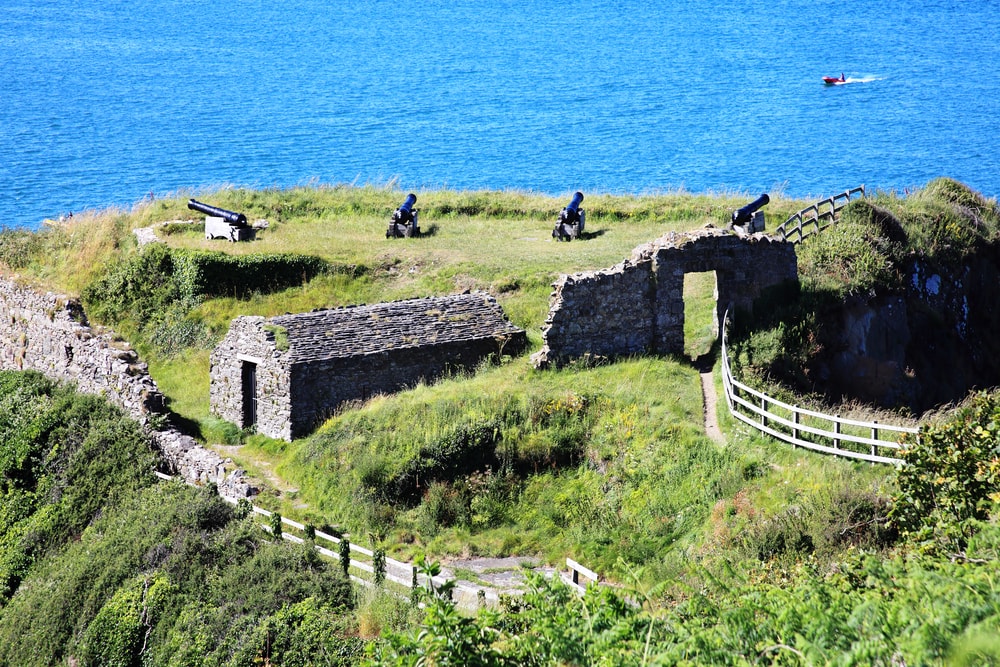
A Young Frenchman and his wife stop me to ask for directions.
“Is this the way to the invasion tapestry?”
I nod and point along Goodwick’s intriguing promenade.
“Yes. Follow the main road.”
“Merci.” They wave, and continue on their way.
I return my gaze to the marvellous mosaics on the promenade along Goodwick Sands. They paint a picture of Fishguard’s surprisingly colourful history, which I’m discovering more about on my short seaside saunter.
One thing is clear – the people of Fishguard are adept at handling invasions.
My friendly French tourists come in peace, but 220 years ago, on February 22, 1797, around 1,400 French troops arrived in the Irish Sea with grand plans to conquer the British.
It became known as the Last Invasion of Britain, and had it succeeded we might all be speaking French today!
The last French invasion has given me a great excuse to explore the Celtic coastline around Pembrokeshire’s Fishguard, in the west of Wales.
I bumped into today’s French invaders as they were overlooking Fishguard’s modern harbour, which is actually located in neighbouring Goodwick, where the sea is deep enough for the large ferry serving the twice-daily crossings to Ireland’s Rosslare.
The 18th-century invasion began two miles further along the coast on a rocky promontory called Carregwastad Point. The French initially landed a couple of hundred troops on this isolated peninsula between Goodwick and Strumble Head, which is now marked with a stone monument.
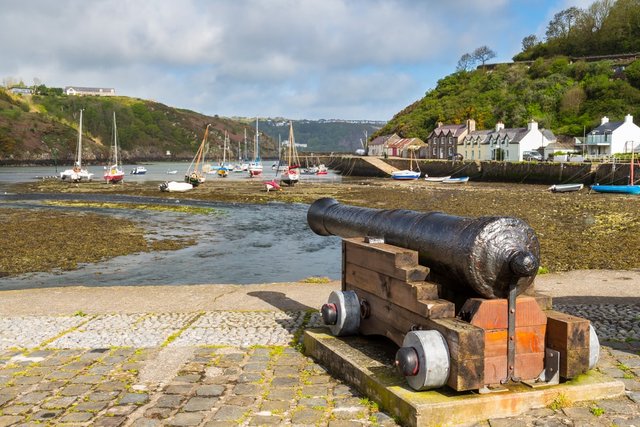
This wasn’t their planned invasion spot, though. Originally, they were to sail up the Severn Estuary to Bristol, but easterly winds forced them to abandon this.
Instead they sailed around the Welsh coastline into Cardigan Bay where they dropped anchor just off Carregwastad Point. Under the darkening evening sky, boatloads of French troops climbed up the rocky cliffs on to the remote headland, and began attacking and ransacking any isolated farmhouses they came across.
They must have thought it was their lucky evening when they stumbled across one farmhouse in the middle of some wedding celebrations. A recent shipwreck had led to a surfeit of alcohol washing ashore, which locals had cannily captured and saved for this special occasion.
The soldiers helped themselves, along with the food, and spent the rest of the evening in a drunken stupor. The locals raised the alarm but didn’t wait for help to arrive. Instead, they took matters into their own hands.
A local woman, Jemima Nicholas, dressed in her traditional Welsh costume of a large red cloak and black hat and armed with a pitchfork, went out and rounded up 12 French soldiers, whom she promptly marched into Fishguard and locked up!
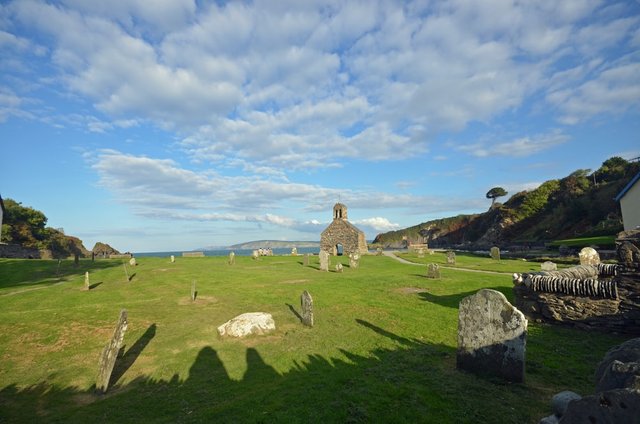
One of the mosaics on the promenade at Goodwick Sands tells the story of the invasion in a series of scenes, and the centre panel depicts Jemima threatening a frightened French soldier with a pitchfork. I wonder what they thought of her.
Local folklore tells how, two days later, Jemima gathered together some 400 local women in their traditional red cloaks, and marched them around Fishguard’s Bigney Hill for several hours.
The French soldiers saw this continuous parade of marching uniformed women and mistook them for British soldiers, arriving in their thousands.
It convinced them to surrender, for which a thankful British government awarded Jemima an annual pension of £50.
Continuing my journey into Fishguard, instead of taking the main road like my new French friends, I follow the coast path, which is quieter and offers wonderful views of this Pembrokeshire coastline.
I spy the old harbour, or Lower Town as it is now known, and across the bay I can just make out the old Fishguard Fort.
A few shots were fired at the French ships from here, but the fort was originally built to protect the town from pirates. In 1779 Fishguard’s main town was bombarded by a pirate ship when the townsfolk refused to pay a £1,000 ransom.
Luckily, a local smuggler with an armed ship came to the town’s rescue, and the pirate ship soon fled. The fort was built to prevent the townsfolk falling victim to such pirates again. In fact, all along the coast path there are several cannons pointing out to sea. Anyone approaching Fishguard in anger from the St Mary’s church, where Jemima Nicholas’s memorial is situated. Irish Sea today should be prepared for a bombardment.
Mind you, the only bombardment I’m worrying about is from the screeching herring gulls swooping in the sky above! There’s a shortcut from the coast path into Fishguard, and soon I’m in the town’s heart, on the main square.
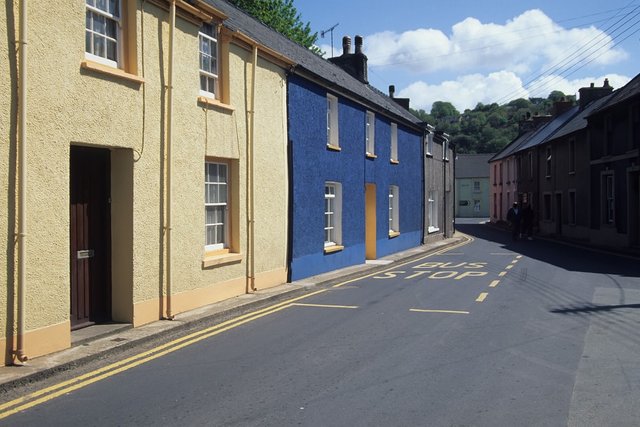
On my left stands the Royal Oak. It was here, on February 24, 1797, where two French officers met with and offered to surrender to Lord Cawdor, Commander in-Chief of the local volunteer soldiers who’d come to defend the town.
From here I see St Mary’s church, where Jemima locked up her captive soldiers. There’s a proud memorial to the town’s Welsh heroine in the grounds, marking her death in 1832 at the age of eighty-two.
Across the road is the town hall, home to the Last Invasion Tapestry. Inside, I spot my French friends from earlier, busy studying the traditional Welsh costume, like the one worn by Jemima Nicholas. Inspired by the Bayeux Tapestry depicting the Norman Invasion of 1066 at the Battle of Hastings, the Last Invasion Tapestry recounts the full story of the French attack.
It was commissioned to commemorate the 200th anniversary of the event in 1997. Seventy-seven local people used 178 different shades of crewel wool to create the embroidered masterpiece over a four-year period. That’s a lot of needlework!
Scrutinising the Last Invasion Tapestry, I soon spot the embroiderers’ sense of humour. There’s a lovely section illustrating a chicken attacking someone’s leg, and another of Jemima Nicholas with her pitchfork gripping the shoulder of one of her prisoners!
As I wander along the tapestry, marvelling at the intricate needlework, and in awe of its design, I wonder how different life could have been had the French been better organised.
The French tourist recognises me again. He points at the tapestry.
“It is amazing, is it not?”
“As good as Bayeux?” I enquire.
“Oui.” He winks.
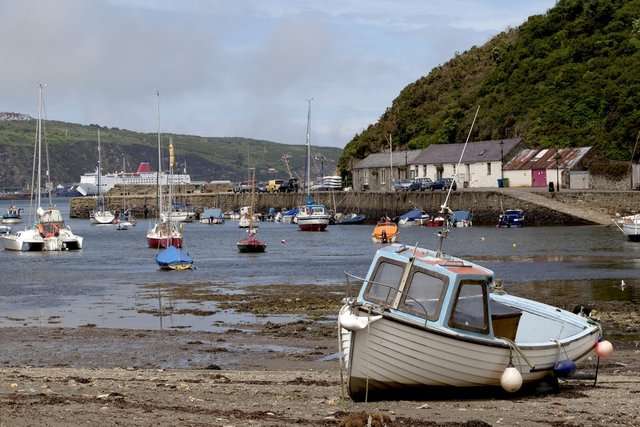
Thankfully, Anglo-French relations are much better 220 years on. From the town hall, it’s a short walk down a steeply curved road to the original Fishguard community of Lower Town. Squashed between the quayside and the cliffs behind, a row of cottages lines the banks of the River Gwaun, where it Fishguard Tourist Information Centre, Town Hall, Market Square, Fishguard, Pembrokeshire, meets the sea.
The tide is out, so the armada of sailing and fishing boats lie abandoned on dry land, with only the wind rattling around their masts. I’m confronted by a sculpture. A shoal of herring is suspended high above my head, in a sea of blue sky. It’s a reminder of this port’s main industry many years ago.
A number of vessels regularly landed herring here, which were then sent to Bristol, Liverpool and Ireland. I spot another plaque commemorating a different invasion, back in 1971, when Hollywood took over the town.
A star-studded cast, including Richard Burton, Elizabeth Taylor, Peter O’Toole, Siân Phillips, Victor Spinetti, Ruth Madoc and David Jason, came here to make a film adaptation of Dylan Thomas’s radio play “Under Milk Wood”. Fishguard’s Lower Town was used as the fictional town of Llareggub.
At the end of the quay is another sculpture called the Sun Worshipper, perfectly placed to enhance his existing golden tan. I sit down on the rocks beside him, and spy the Fishguard Bay Hotel across the bay at Goodwick.
Suddenly, the tones of a deep-throated horn echo round the cliffs, announcing the afternoon arrival of the ferry from Ireland. Another invasion force has arrived. I’m sure they come in peace, though.
And because it’s so peaceful here, I might just rest my eyelids for a moment and enjoy the sunshine and sea air. Everyone who comes to fabulous Fishguard falls for its delights in one way or another.
P.S. All the travels posted by me are imaginary but the historical facts are true :)
Follow for more...
Wales is a really beautiful country. I visited once when I was a little boy, and I loved it there. I hope to go back one day!
Congratulations @gcyrogy! You have completed some achievement on Steemit and have been rewarded with new badge(s) :
Click on any badge to view your own Board of Honnor on SteemitBoard.
For more information about SteemitBoard, click here
If you no longer want to receive notifications, reply to this comment with the word
STOPBy upvoting this notification, you can help all Steemit users. Learn how here!
Congratulations @gcyrogy! You have completed some achievement on Steemit and have been rewarded with new badge(s) :
Click on any badge to view your own Board of Honnor on SteemitBoard.
For more information about SteemitBoard, click here
If you no longer want to receive notifications, reply to this comment with the word
STOPBy upvoting this notification, you can help all Steemit users. Learn how here!
@gcyrogy, thank you for supporting @steemitboard as a witness.
You can click on your award to jump to your Board of Honor
Once again, thanks for your support!
Congratulations ! Your post has been highlighted in the Daily Travel Reports